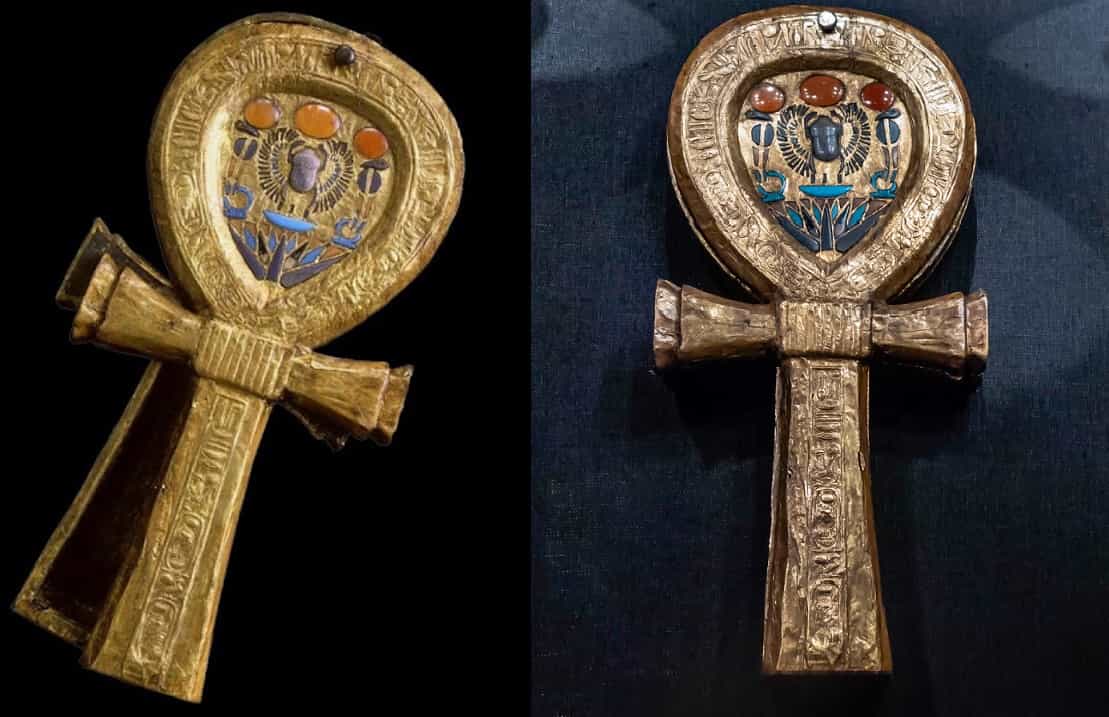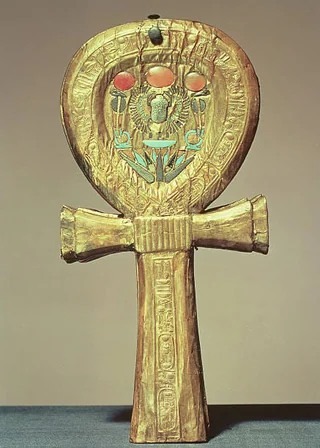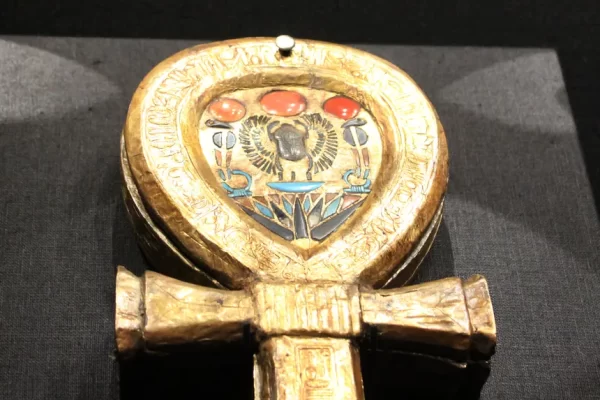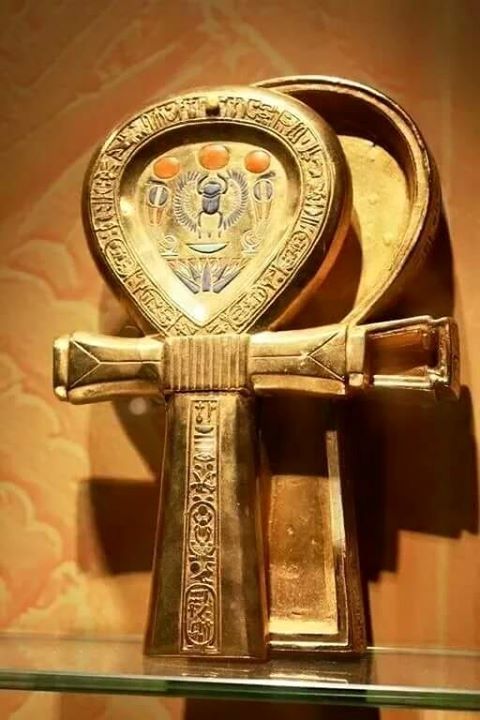Mirror Case in the Form of an Ankh

This remarkable artifact is a mirror case shaped like an ankh cross, meticulously crafted from gilded wood and discovered in the tomb of Tutankhamun. Measuring 27 cm in length and 4 cm in thickness, the case is ingeniously designed with a hinged mechanism that opens to reveal the mirror within.

The lid is beautifully decorated with Tutankhamun’s royal names and titles, carved in light relief and inlaid with semi-precious stones. These hieroglyphic inscriptions are framed by a graceful lotus motif, symbolizing rebirth and renewal, with subtle shades of soft blue enhancing its refined aesthetic.

On either side of the lid are two protective cobras, each adorned with a carnelian solar disk upon its head. Their tails intertwine into the “shen” symbol, signifying eternity, while the turquoise hue of the serpents creates a striking contrast with the surrounding lotus petals.

Though mirrors were common in ancient Egyptian daily life, they also carried deep funerary symbolism. Their reflective surface, capturing and returning light, was associated with the divine power of the sun and the concept of regeneration. When combined with the **ankh—the symbol of life itself—**this mirror case represented the eternal vitality and rebirth of the deceased in the afterlife.











